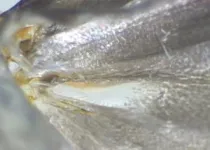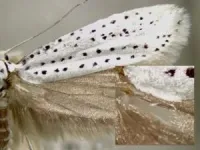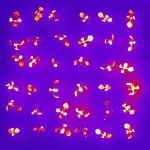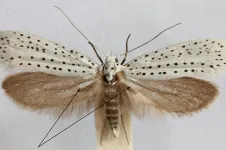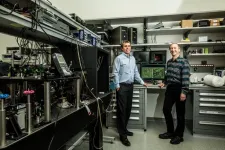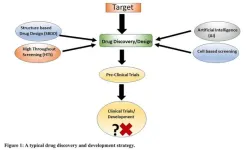EVANSTON, Ill. — When carbon molecules from plants enter the soil, they hit a definitive fork in the road.
Either the carbon gets trapped in the soil for days or even years, where it is effectively sequestered from immediately entering the atmosphere. Or it feeds microbes, which then respire carbon dioxide (CO2) into the ever-warming environment.
In a new study, Northwestern University researchers determined the factors that could tip plant-based organic matter in one direction or the other.
By combining laboratory experiments and molecular modeling, researchers examined interactions between organic carbon biomolecules and a type of clay minerals known for trapping organic matter in soil. They found that electrostatic charges, structural features of carbon molecules, surrounding metal nutrients in soil and competition among molecules all play major roles in soil’s ability (or inability) to trap carbon.
The new findings could help researchers predict which soil chemistries are most favorable for trapping carbon — potentially leading to soil-based solutions for slowing human-caused climate change.
The research will be published on Feb. 9 in the Proceedings of the National Academy of Sciences.
“The amount of organic carbon stored in soil is about ten times the amount of carbon in the atmosphere,” said Northwestern’s Ludmilla Aristilde, the study’s senior author. “If this enormous reservoir is perturbed, it would have substantial ripple effects. There are many efforts to keep carbon trapped to prevent it from entering the atmosphere. If we want to do that, then we first must understand the mechanisms at play.”
An expert in the dynamics of organics in environmental processes, Aristilde is an associate professor of civil and environmental engineering at Northwestern’s McCormick School of Engineering. Jiaxing Wang, a Ph.D. student in Aristilde’s laboratory, is the paper’s first author. Rebecca Wilson, an undergraduate student at Northwestern, is the paper’s second author.
Common clay
Holding 2,500 billion tons of sequestered carbon, soil is one of Earth’s largest carbon sinks — second only to the ocean. But even though soil is all around us, researchers are only just beginning to understand how it locks in carbon to sequester it from the carbon cycle.
To investigate this process, Aristilde and her team looked to smectite clay, a type of clay mineral known to sequester carbon in natural soils. Then, they examined how the clay mineral’s surface bonded to ten different biomolecules — including amino acids, sugars related cellulose and phenolic acids related to lignin — with varying chemistry and structures.
“We decided to study this clay mineral because it’s everywhere,” Aristilde said. “Nearly all soils have clay minerals. Also, clays are prevalent in semi-arid and temperate climates — regions that we know will be affected by climate change.”
Opposites attract
Aristilde and her team first looked at interactions between clay minerals and individual biomolecules. Because clay minerals are negatively charged, biomolecules with positively charged components (lysine, histidine and threonine) experienced the strongest binding. But, interestingly, this binding was not solely determined by electrostatic charges. Using 3D computational modeling, the researchers found that the structure of the biomolecules also played a role.
“There are instances where two molecules are both positively charged, yet one has a better interaction with the clay than the other,” Aristilde said. “It’s because the structural features of the binding are also important. A molecule has to be flexible enough to adopt a structural arrangement that can position itself in a way that aligns its positively charged components with the clay. The lysine, for example, has a long arm with a positive charge that it can use to anchor itself.”
A little help from friends
Following this logic, one might assume that negatively charged biomolecules were unable to bind to the clay. But Aristilde and her team discovered that surrounding, natural metal nutrients could intervene. Positively charged metals, such as magnesium and calcium, formed a bridge between the negatively charged biomolecules and clay minerals to create a bond.
“Even with a biomolecule that wouldn’t normally bind to the clay, we saw a significant increase in binding when magnesium was there,” Aristilde said. “So, natural metal constituents in the soil can facilitate carbon trapping. Although this is a widely reported phenomenon, we shed light on the structures and mechanisms.”
Mix and mingle
When studying interactions between individual biomolecules and clay minerals, the researchers found binding was predictable and straightforward. To attain information more closely aligned with real-world environments, Aristilde and her team mixed the different biomolecules together.
“We know different types of biomolecules in the environment exists together,” Aristilde said. “So, we also performed experiments with a mixture of biomolecules.”
Although the researchers initially thought the biomolecules would compete with one another to interact with the clay, they instead discovered unexpected behaviors. In a surprising twist, even positively charged biomolecules with flexible structures were inhibited from binding to the clay minerals. While they easily bonded to the clay when alone, the biomolecules’ urges to bond with one another appears to supersede their attractions to the clay.
“This has not been shown before,” Aristilde said. “The energy of attraction between two biomolecules was actually higher than the energy of attraction of a biomolecule to the clay. That led to a decrease in adsorption. It changes the way we think about how molecules compete on the surface. They aren’t just competing for binding sites on the surface. They can actually attract each other.”
What’s next
Next, Aristilde and her team plan to examine how biomolecules interact with minerals in soils found in warmer regions, including tropical climates. In another related project, they aim to explore how organic matter is transported in rivers and other water systems.
“Now that we have studied clay minerals found mostly in temperate zones, we want to understand other types of minerals,” Aristilde said. “How do they trap organic matter? Are the processes the same or different? If we want to keep carbon trapped in soil, then we need to understand how it’s all assembled and how this assembly affects accessibility to microbes.”
The study, “Electrostatic coupling and water bridging in adsorption hierarchy of biomolecules at water-clay interfaces,” was supported by the National Science Foundation (award number CBET-1653092).
END

